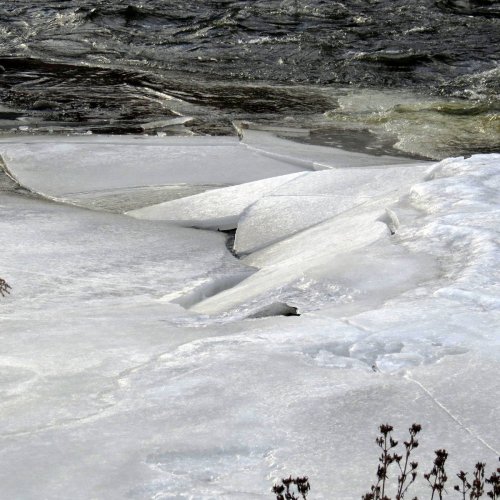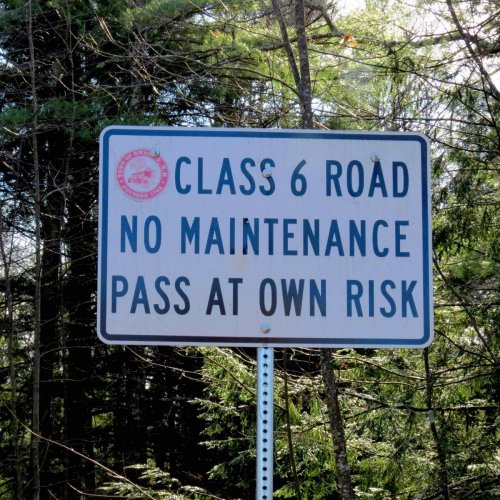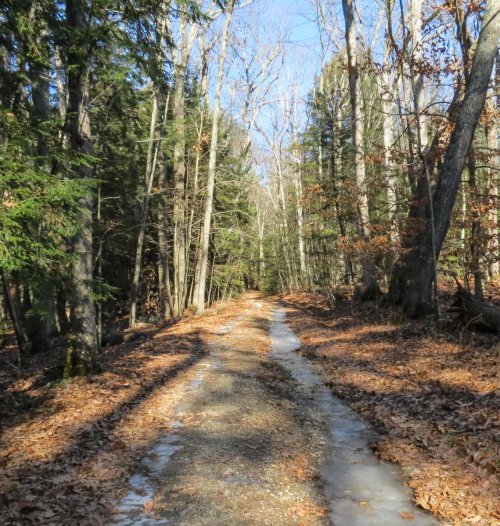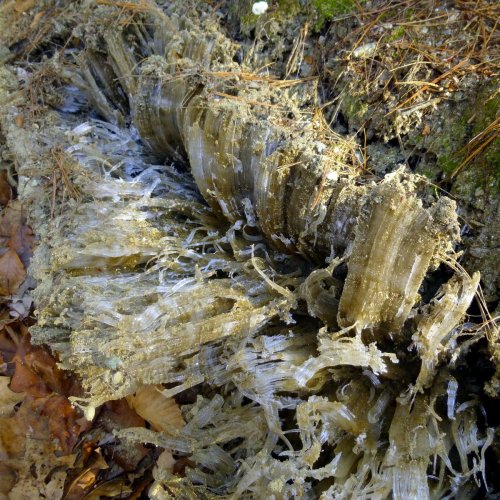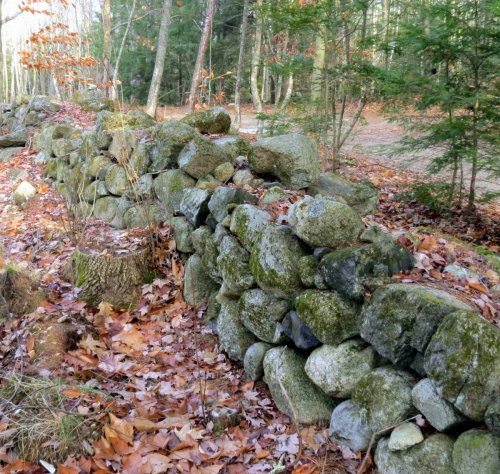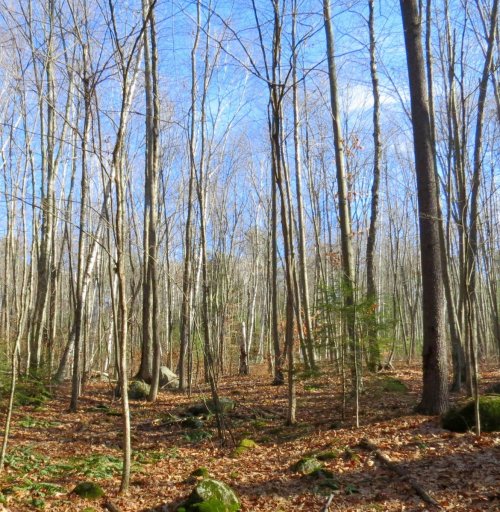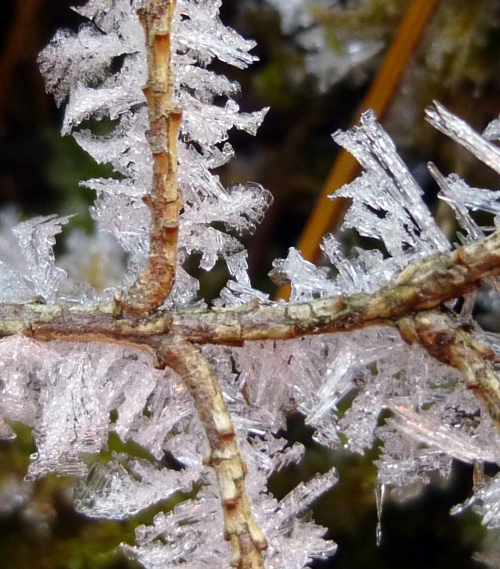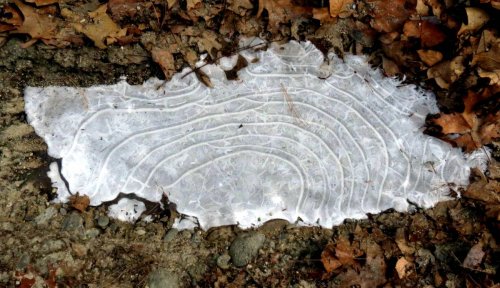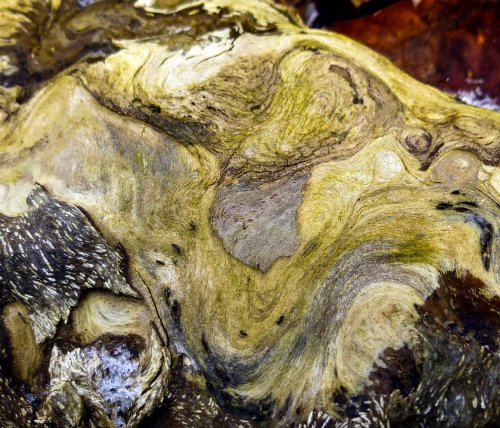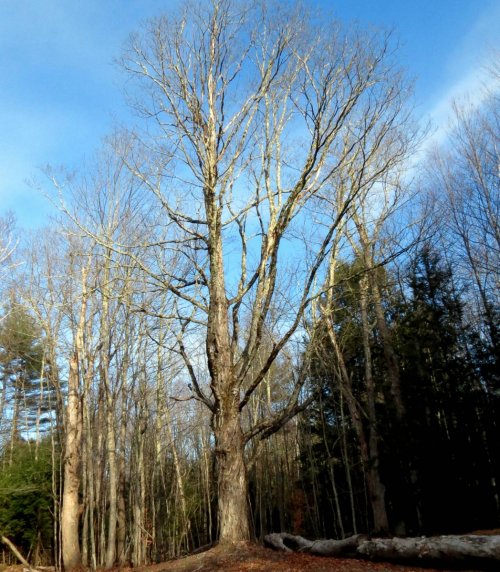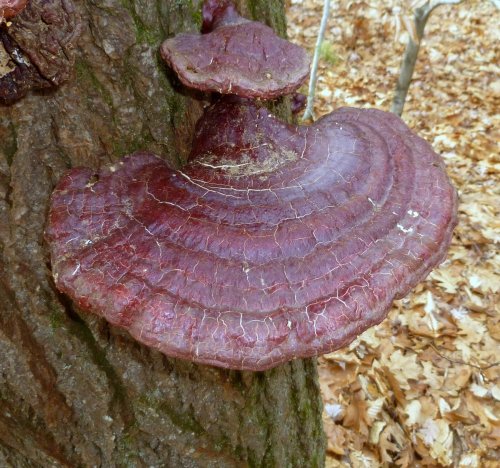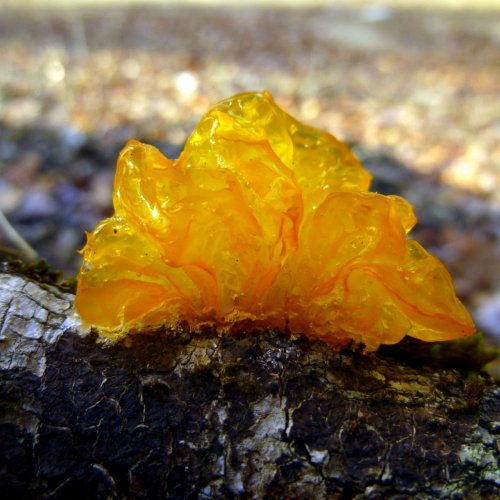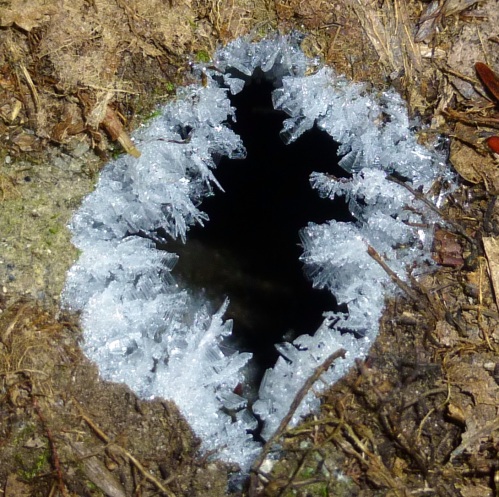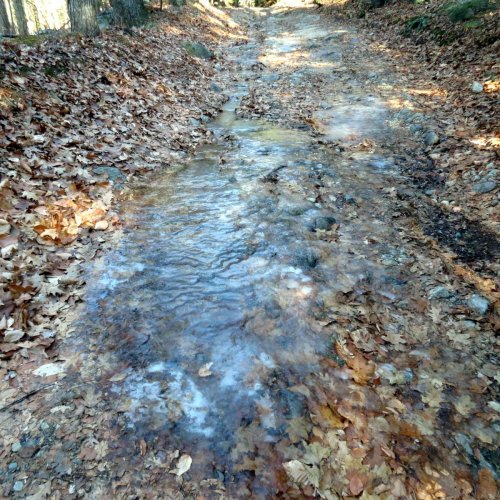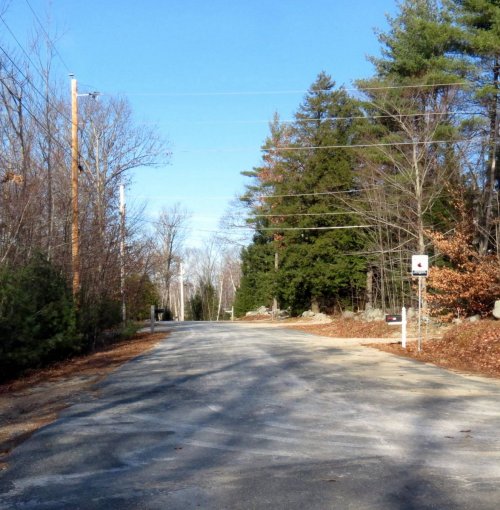This is another post full of things I’ve seen in the woods which, for one reason or another, didn’t fit into other posts.
Early settlers planted European barberry (Berberis vulgaris) so they could make jam from its fruit and yellow dye from its bark. This plant, along with American barberry (Berberis canadensis) plays host to wheat rust disease and has been slowly but surely undergoing eradication by the U.S. government. Both plants have clusters of 3 or more thorns, but American barberry doesn’t grow in New England. Japanese barberry (Berberis thunbergii), grows in New England but it has just a single thorn under each leaf or cluster of leaves.
Boston ivy (Parthenocissus tricuspidata) looks a lot like English ivy (Hedera helix), but English ivy is evergreen and Boston ivy is deciduous, with leaves that turn bright red in the fall before falling. Both plants will climb trees, brick walls, and just about anything else in their path. This photo shows the plant’s dried (and probably frozen) berries. Interestingly, the plant is from Eastern Asia, not Boston.
Some hydrangea blossoms stay on the plant throughout winter and will eventually come to look “skeletonized” and lace like. I keep checking mine, but it hasn’t happened yet.
Indian pipe flowers (Monotropa uniflora) are nodding until they have been pollinated, and then they stand straight up. The seed pods dry that way and take on the look of old wood. This capsule will split down its sides into 5 parts to release its seeds. It is said that Native Americans had a story that this plant first appeared where an Indian had dumped some white ashes from his pipe.
The hole in the side of this oak marble gall tells me that the gall wasp (Andricus kollari) that lived inside it has grown and flown.
Witch’s broom is a deformity described as a “dense mass of shoots growing from a single point, with the resulting structure resembling a broom or a bird’s nest.” The example in the photo is on a highbush blueberry (Vaccinium corymbosum ) and was caused by a fungus (Pucciniastrum goeppertianum). This fungus spends part of its life cycle on the needles of balsam fir (Abies balsamea). When it releases its spores and they land on the stems and leaves of the blueberry, it becomes infected. The fungus overwinters on blueberry bushes and in the spring again releases spores which will infect even more balsam fir trees and the cycle will begin again. In my experience witch’s broom doesn’t affect fruit production.
Hawthorns (Crataegus) might have evolved thorns to keep animals away but they don’t keep birds away. This bush had been stripped of every fruit except one tired old, mummified haw.
There are still plenty of fruit on the winterberry bushes (Ilex verticillata), but they’re starting to whither a bit too. Winterberry is a deciduous native holly with berries that have a low fat content, so birds tend to leave them until last, when it gets a little warmer. Even so, it is said that 48 different species of birds and many small mammals eat them. Native Americans used the bark of this shrub medicinally to treat inflammations and fevers, which explains how it came by another of its common names: fever bush. It was also used as a substitute for quinine in parts of the U.S. in the 18th century.
The body (Thallus) of a rock disk lichen (Lecidella stigmatea) can be gray or whitish, but can also be stained green, red-brown or black, so sometimes it’s hard to know what you’ve found. My color finding software sees gray with green in this example. This lichen’s fruiting bodies (Apothecia) are flat or convex dark brown or black disks. This lichen is similar to tile lichens, but the fruiting bodies on tile lichens are always sunken into the body of the lichen rather than even with or standing above it. The rock it was on was wet and that’s why it’s so shiny.
I think these tiny things might be bird’s nest fungi, but I can’t be sure because there are no “eggs” in them. The eggs are actually fruiting bodies that contain spores and are called peridioles. These peridioles have hard waxy coatings and get splashed out of the cup shaped “nest” by raindrops. Once the outer coating wears away the spores can germinate.
If you have ever shot an air rifle (BB gun) and know what a “BB” is, picture a single BB filling one of these cups. For those of you unfamiliar with BB guns, most BBs are 0.171 to 0.173 inches (4.3 to 4.4 mm) in diameter. If you would like to see some great photos of bird’s nest fungi with their eggs, Rick at the Between Blinks blog just did a post about them. You can get there by clicking here.
Oak leaves curl into each other in the winter as if to keep warm. I can’t think of any other leaves that do this.
When viewing a seed head from the burdock plant (Arctium species) in an extreme close up it’s easy to see why they stick to everything. When Swiss inventor George de Mestral pulled a bunch of burrs from his pants and looked at them under a microscope in 1940, he came up with the hook and loop system that is called Velcro today. The word Velcro comes from the words velour and crotchet. Not surprising really, since the burr seeds look like tiny crochet hooks.
The moment one gives close attention to anything, even a blade of grass, it becomes a mysterious, awesome, indescribably magnificent world in itself. ~Henry Miller
Thanks for stopping in.




















